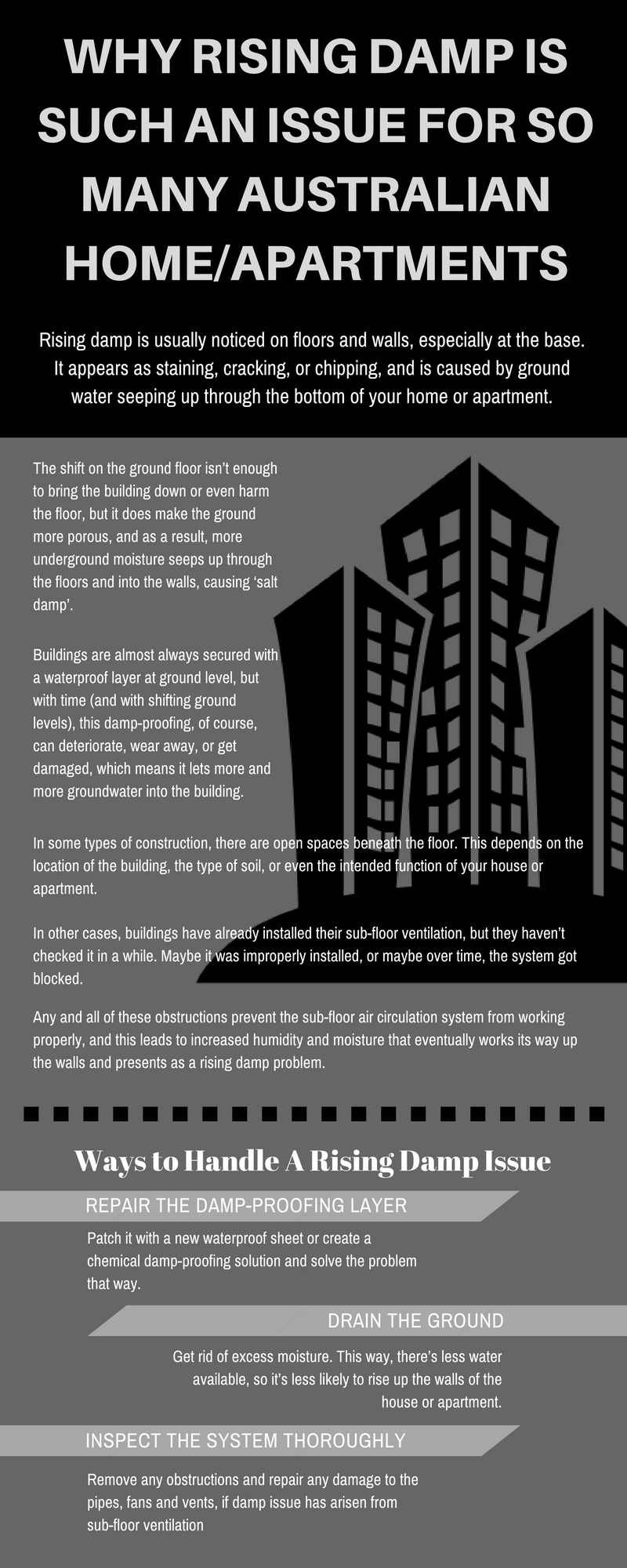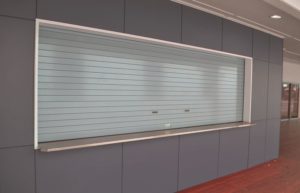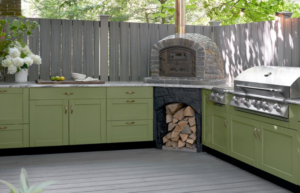Why Rising Damp is Such an Issue for so Many Australian Home or Apartments

Have you noticed the tendency to blame all life’s problems on global warming? Our nation is basically a huge island, so we’re more likely than anyone else to worry about the rising sea levels threatening to sink us into the ocean. So it’s not completely unexpected that the increase in ‘salt damp’ would be blamed on global temperature.
But … just because people make an assumption doesn’t necessarily mean it’s true. There are far more terrestrial reasons for the rise in damp, and there are feasible ways to resolve the crisis as well. Rising damp is usually noticed on floors and walls, especially at the base. It appears as staining, cracking, or chipping, and is caused by ground water seeping up through the bottom of your home or apartment.
We don’t physically feel it, but the earth is in constant movement. In some parts of the world, the earth moves in a more noticeable way, and this movement causes hurricanes, typhoons, tsunamis, and earthquakes. But even in places where the movement is less dramatic, the level of the ground does shift, just like the sea level in beach towns.
This shift in the ground level isn’t enough to change your balance or tip your furniture, but it does affect the foundation of buildings. The shift isn’t enough to bring the building down or even harm the floor, but it does make the ground more porous, and as a result, more underground moisture seeps up through the floors and into the walls, causing ‘salt damp’.

Buildings are almost always secured with a waterproof layer at ground level, but with time (and with shifting ground levels), this damp-proofing, of course, can deteriorate, wear away, or get damaged, which means it lets more and more groundwater into the building. Sometimes though, the reason for rising damp comes from beneath the damp-proofing layer itself.
In some types of construction, there are open spaces beneath the floor. This depends on the location of the building, the type of soil, or even the intended function of your house or apartment. If these spaces do not get enough air circulation, they will soon become dank and musty due to evaporation of moisture from the soil. This moisture build-up will eventually seep into the floor and start travelling up the walls. Artificial ventilation systems like fans, pipes, and vents can resolve this challenge.
In other cases, buildings have already installed their sub-floor ventilation, but they haven’t checked it in a while. Maybe it was improperly installed, or maybe over time, the system got blocked. All kinds of obstructions can interfere with the ventilation system. It could be bits of debris got lodged in the pipes, or pests and small animals that somehow got stuck down there, or even natural deterioration through rust, dust, and accumulated moisture.
Any and all of these obstructions prevent the sub-floor air circulation system from working properly, and this leads to increased humidity and moisture that eventually works its way up the walls and presents as a rising damp problem.
There are lots of different ways to handle the rising damp issue. The reflex option is to repair the damp-proofing layer. If the damp is rising through a small area, you can patch it with a new waterproof sheet or create a chemical damp-proofing solution and solve the problem that way.
If the problem is on a larger scale, you might need to drain the ground to get rid of excess moisture. This way, there’s less water available, so it’s less likely to rise up the walls of the house or apartment. If your damp issue has arisen from sub-floor ventilation issues, inspect the system thoroughly to remove any obstructions and repair any damage to the pipes, fans and vents.





